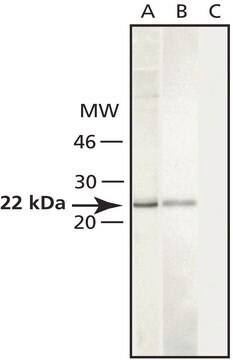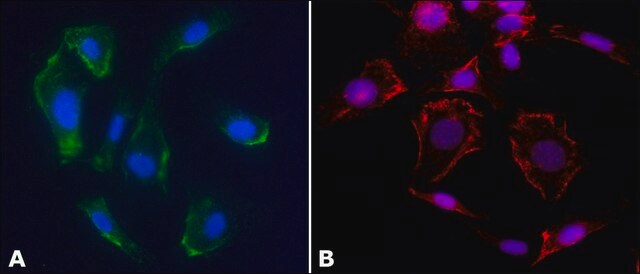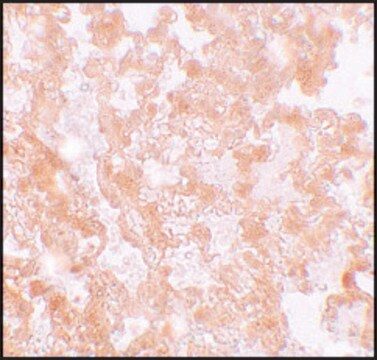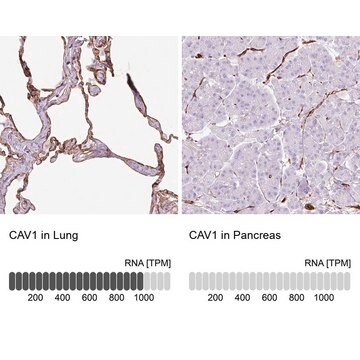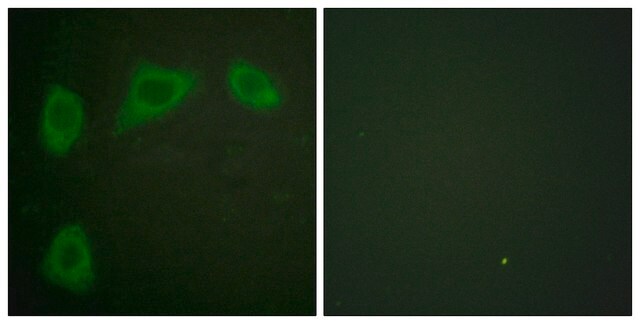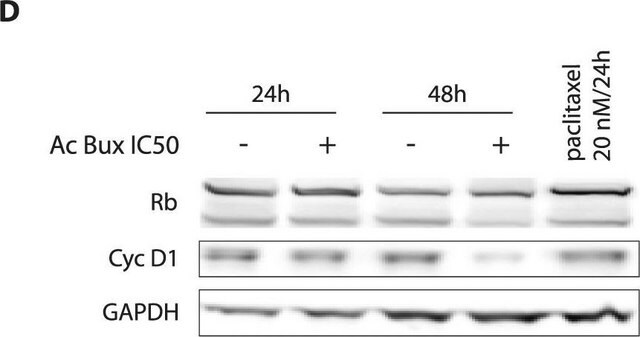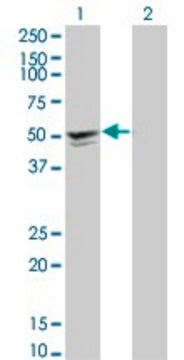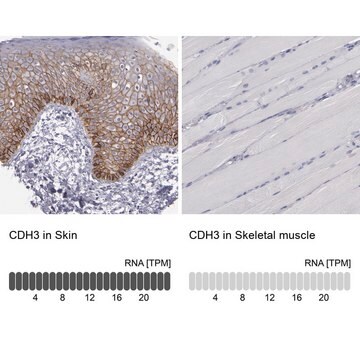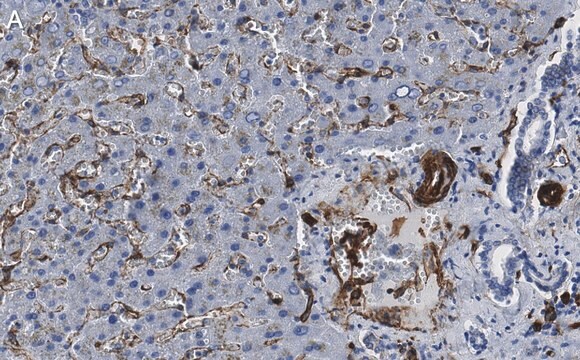SAB4200216
Monoclonal Anti-Caveolin-1 antibody produced in mouse

clone CAV1, tissue culture supernatant
Synonym(e):
Anti-BSCL3, Anti-CAV1, Anti-CGL3, Anti-MSTP085, Anti-VIP21, Anti-caveolae protein, 22kDa
About This Item
Empfohlene Produkte
Biologische Quelle
mouse
Konjugat
unconjugated
Antikörperform
tissue culture supernatant
Antikörper-Produkttyp
primary antibodies
Klon
CAV1, monoclonal
Form
buffered aqueous solution
Mol-Gew.
antigen 22 kDa
Speziesreaktivität
rat, human, mouse
Erweiterte Validierung
independent
Learn more about Antibody Enhanced Validation
Methode(n)
immunohistochemistry: suitable
indirect immunofluorescence: 1:1000-1:2000 using human HUVEC or mouse 3T3 cells.
western blot: suitable
Isotyp
IgM
UniProt-Hinterlegungsnummer
Versandbedingung
dry ice
Lagertemp.
−20°C
Posttranslationale Modifikation Target
unmodified
Angaben zum Gen
human ... CAV1(857)
mouse ... Cav1(12389)
rat ... Cav1(25404)
Allgemeine Beschreibung
Immunogen
Anwendung
Western Blotting (1 paper)
Biochem./physiol. Wirkung
Physikalische Form
Haftungsausschluss
Sie haben nicht das passende Produkt gefunden?
Probieren Sie unser Produkt-Auswahlhilfe. aus.
Empfehlung
Lagerklassenschlüssel
10 - Combustible liquids
Flammpunkt (°F)
Not applicable
Flammpunkt (°C)
Not applicable
Hier finden Sie alle aktuellen Versionen:
Besitzen Sie dieses Produkt bereits?
In der Dokumentenbibliothek finden Sie die Dokumentation zu den Produkten, die Sie kürzlich erworben haben.
Artikel
Quantitative and qualitative western blotting to validate knockdown by esiRNA. Sigma-Aldrich.com
Unser Team von Wissenschaftlern verfügt über Erfahrung in allen Forschungsbereichen einschließlich Life Science, Materialwissenschaften, chemischer Synthese, Chromatographie, Analytik und vielen mehr..
Setzen Sie sich mit dem technischen Dienst in Verbindung.